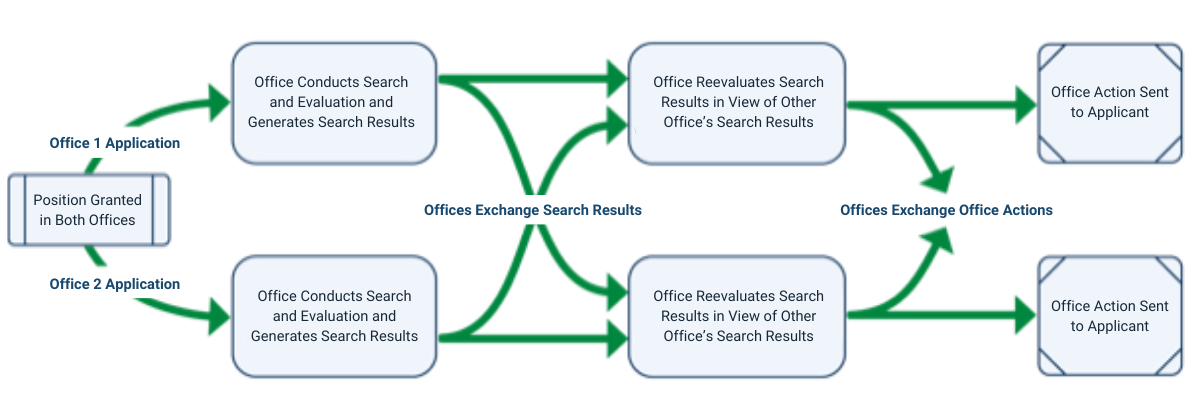Earlier this year, the United States Patent and Trademark Office announced in a Federal Register notice that it is extending its Collaborative Search Pilot program through October 31, 2024.
It allows applicants who cross-file their patent applications internationally to obtain prior art search results from multiple patent offices at the same time. Currently, the two participating international patent offices are the Japan Patent Office and the Korean Intellectual Property Office.
How the CSP Works
The CSP is primarily a collaboration between patent examiners in their respective patent offices. After an applicant’s petition to participate in the program is granted, each examiner performs a prior art search and makes an initial determination of patentability. They then exchange their search results with each other, reevaluating their initial determinations in light of the other examiner’s search results. The examiners then exchange office actions with each other, which are then sent to the applicant. See Figure 1 for an overview of the CSP process.

Eligibility for the CSP
Eligibility requirements for the CSP are as follows:
- U.S. applications must be non-reissue, non-provisional utility applications or international applications that have entered the national stage
- The U.S. application must contain three or fewer independent claims and 20 or fewer total claims directed to a single invention. Multiple dependent claims are not allowed.
- The applicant must file a petition for participation in the program in both patent offices before examination has commenced.
- Alternatively, the applicant may file a combined petition in either patent office
- If the application that is filed in the partner patent office is not in English, applicants must provide an English translation of the foreign claims to the USPTO
The program is limited to a maximum of 400 granted petitions per patent office per year.
Benefits of the CSP
The CSP, on its face, may seem like a less attractive option for many patent applicants, as more prior art typically means more rejections. However, the USPTO and its partner patent offices “sweeten the pot” for applicants in a number of ways:
- CSP applications are advanced out of turn, resulting in an expedited first office action on the merits
- CSP applications receive fewer office actions on average than non-CSP applications (according to the USPTO)
- There is no cost to participate in the program
Participation in the CSP may also pay dividends later in litigation. One of the primary lines of attack for patent litigators arguing invalidity is to find and introduce new prior art that was not considered during prosecution. While a broader prior art search during prosecution can increase the likelihood of rejections, it can also strengthen the validity of the issued claims.
Is the CSP right for you? When evaluating potential patent prosecution strategies, a data-backed approach is the best way forward. To learn more about how data can help take the uncertainty out of your patent practice, schedule a free demo of Juristat today.
(gradient).webp)
.png)
